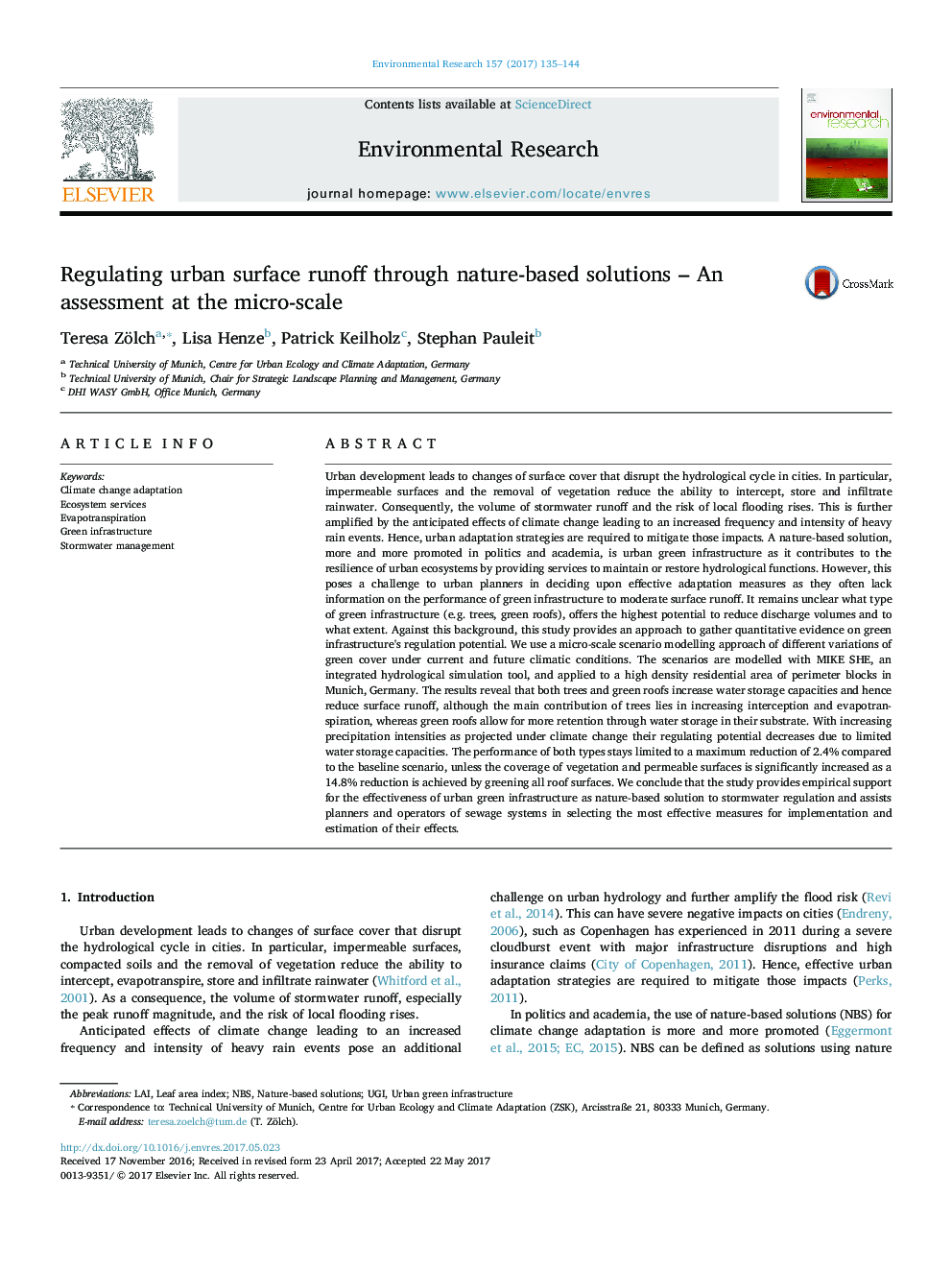| کد مقاله | کد نشریه | سال انتشار | مقاله انگلیسی | نسخه تمام متن |
|---|---|---|---|---|
| 5756289 | 1622546 | 2017 | 10 صفحه PDF | دانلود رایگان |
عنوان انگلیسی مقاله ISI
Regulating urban surface runoff through nature-based solutions - An assessment at the micro-scale
ترجمه فارسی عنوان
تنظیم رواناب سطح شهری از طریق راه حل های مبتنی بر طبیعت - ارزیابی در مقیاس میکرو
دانلود مقاله + سفارش ترجمه
دانلود مقاله ISI انگلیسی
رایگان برای ایرانیان
کلمات کلیدی
NBSUGIEvapotranspiration - تبخیر و تعرقEcosystem services - خدمات اکوسیستمNature-based solutions - راه حل های مبتنی بر طبیعتGreen Infrastructure - زیر ساخت سبزUrban green infrastructure - زیرساخت سبز شهریClimate change adaptation - سازگاری تغییرات اقلیمیLeaf area index - شاخص سطح برگLAI - شبیهStormwater management - مدیریت طوفان
موضوعات مرتبط
علوم زیستی و بیوفناوری
علوم محیط زیست
بهداشت، سم شناسی و جهش زایی
چکیده انگلیسی
Urban development leads to changes of surface cover that disrupt the hydrological cycle in cities. In particular, impermeable surfaces and the removal of vegetation reduce the ability to intercept, store and infiltrate rainwater. Consequently, the volume of stormwater runoff and the risk of local flooding rises. This is further amplified by the anticipated effects of climate change leading to an increased frequency and intensity of heavy rain events. Hence, urban adaptation strategies are required to mitigate those impacts. A nature-based solution, more and more promoted in politics and academia, is urban green infrastructure as it contributes to the resilience of urban ecosystems by providing services to maintain or restore hydrological functions. However, this poses a challenge to urban planners in deciding upon effective adaptation measures as they often lack information on the performance of green infrastructure to moderate surface runoff. It remains unclear what type of green infrastructure (e.g. trees, green roofs), offers the highest potential to reduce discharge volumes and to what extent. Against this background, this study provides an approach to gather quantitative evidence on green infrastructure's regulation potential. We use a micro-scale scenario modelling approach of different variations of green cover under current and future climatic conditions. The scenarios are modelled with MIKE SHE, an integrated hydrological simulation tool, and applied to a high density residential area of perimeter blocks in Munich, Germany. The results reveal that both trees and green roofs increase water storage capacities and hence reduce surface runoff, although the main contribution of trees lies in increasing interception and evapotranspiration, whereas green roofs allow for more retention through water storage in their substrate. With increasing precipitation intensities as projected under climate change their regulating potential decreases due to limited water storage capacities. The performance of both types stays limited to a maximum reduction of 2.4% compared to the baseline scenario, unless the coverage of vegetation and permeable surfaces is significantly increased as a 14.8% reduction is achieved by greening all roof surfaces. We conclude that the study provides empirical support for the effectiveness of urban green infrastructure as nature-based solution to stormwater regulation and assists planners and operators of sewage systems in selecting the most effective measures for implementation and estimation of their effects.
ناشر
Database: Elsevier - ScienceDirect (ساینس دایرکت)
Journal: Environmental Research - Volume 157, August 2017, Pages 135-144
Journal: Environmental Research - Volume 157, August 2017, Pages 135-144
نویسندگان
Teresa Zölch, Lisa Henze, Patrick Keilholz, Stephan Pauleit,
